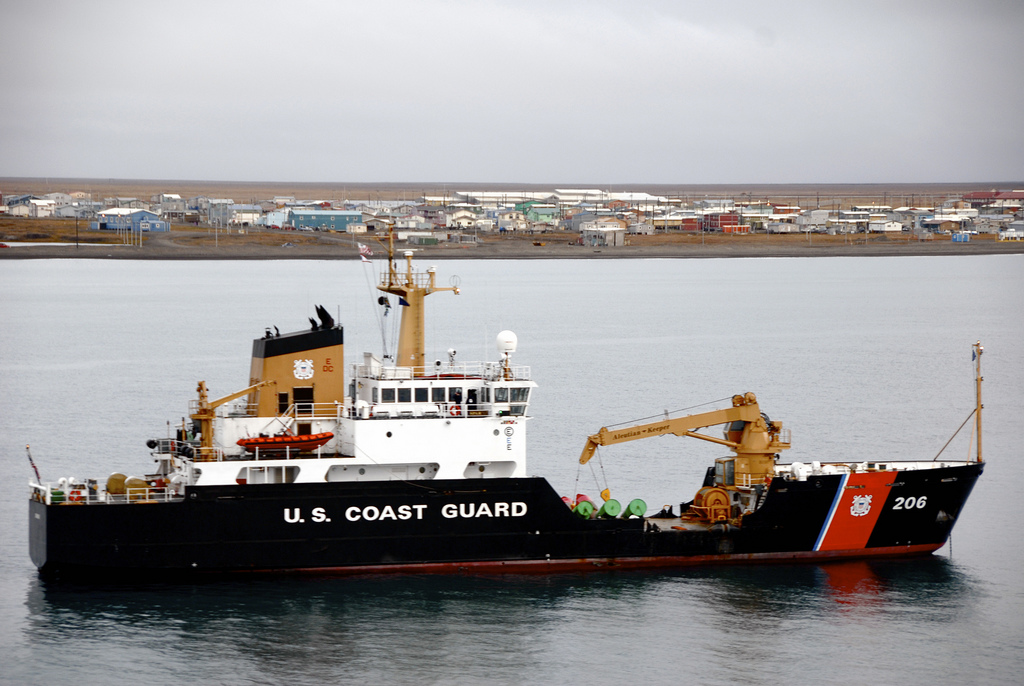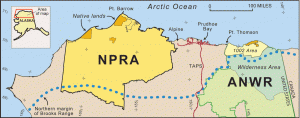
An Arctic Proposal for the New Administration
A change of administration in Washington means an opportunity to set new policy priorities, and prioritizing investment in the Arctic would be a smart step for the Trump administration. Doing so would reap significant benefits in terms of border security, rural economic growth, and international regional cooperation.
The administration has proposed an “America first” policy, emphasizing the importance of secure borders. Increasing resources allocation to America’s Arctic borders would be a constructive and relatively inexpensive way to fulfill this campaign promise. Alaska has an Arctic coastline stretching over 800 miles across the Arctic Ocean along the Beaufort and Chukchi Seas. The Arctic National Wildlife Refuge as well as the National Petroleum Reserve Alaska lie on this coastline; both have noteworthy potential as oil and natural gas reserves. Climate conditions in the region are predicted to become much more volatile as sea ice and permafrost melt, potentially threatening the safety and productivity of the regional oil and natural gas drilling infrastructure. Safeguarding these valuable reserves against climate-related insecurity could be an easy win for a new administration that has promised to “Make America Safe Again.”
Arctic Energy
Economically, investing in the North Slope coastline and oil reserves would bring significant dividends. Much of the North Slope of Alaska, and the coastline along the Beaufort Sea in particular, is dotted with oil fields and production facilities in the National Petroleum Reserve Alaska. Commissioning more ice-breaker ships and other cold-weather infrastructure, as noted in this report co-written by American Security Project’s Brig. Gen. Cheney, is a crucial step to securing America’s Arctic coastline.
Further exploiting North Slope oil reserves could prove an attractive proposal for the Trump administration; this would create more American energy-sector jobs in rural Alaska as well as boost domestic energy production overall. It would also be beneficial from an international relations perspective: American Security project has previously noted the importance of not falling behind our regional peers in oil drilling initiatives. By setting the bar for high safety and environmental standards for Arctic drilling infrastructure, America has the opportunity to lead by example while demonstrating U.S. strength in and commitment to the region.
Keeping up with the Kotelnys
Arctic drilling is not the only avenue in which the US risks falling behind its peers, however. Russia is also investing in enhanced intelligence, surveillance, and reconnaissance in the region. Failing to do the same could put the US at a strategic disadvantage. A 2011 Department of Defense report cites American strategic objectives in the Arctic as being firstly, prevention and deterrence of conflict in the Arctic; and secondly, the ability to respond to “a wide range of challenges and contingencies.” In order to accomplish this, the US must invest in more regional infrastructure, such as ice breaker ships.
Furthermore, as the Arctic terrain changes, it will be imperative for the US to stay abreast of changing conditions. Particularly concerning potential new shipping routes, American attention today could pay significant trade dividends in the future.
Increased activity in the Arctic will also reassure our regional allies who may be worried about Russian aggression in the region. Although Russia has so far proven to be a cooperative partner in the region, the US cannot depend on that to last forever. Domain awareness in the area will allow us to respond more quickly to security threats, whether the threats are of a military or a natural disaster nature.
Security Through Cooperation
In times of heightened tensions between the United States and Russia, science diplomacy has proven an enduring source of bilateral cooperation. The Arctic has the potential to become one of these issues. In addition to its significant potential for scientific exploration, a secure and well-monitored Arctic will benefit all parties involved.
Multilateral cooperation is a useful tool for considering Arctic issues because of the multinational makeup of the region itself. The Arctic Council is a good vehicle for pursuing this multilateral approach. An intergovernmental forum designed for multinational cooperation, it consists of representatives from each Arctic country and a rotating chairmanship. The United States will retain the chairmanship of the Council through May of 2017. Finland will assume the chairmanship at the 10th Arctic Council Ministerial Meeting in Fairbanks, AK. While U.S. Chairmanship under the Trump administration is unlikely to find substantive footing in the three months before the transition, the ministerial is an opportunity for the administration to demonstrate its seriousness concerning Arctic issues.
However, the Council is prohibited from addressing security issues. Under the previous administration, it focused on environmental and social issues facing Arctic communities. The administration should also consider proposing a Regional Security Forum to discuss security-related issues not germane to the Council.
The Arctic has the potential to be a source of both scientific and security cooperation and reassurance between Russia, the U.S. and the European Union. The new administration should strongly consider devoting more resources to Arctic issues to leverage this potential.






